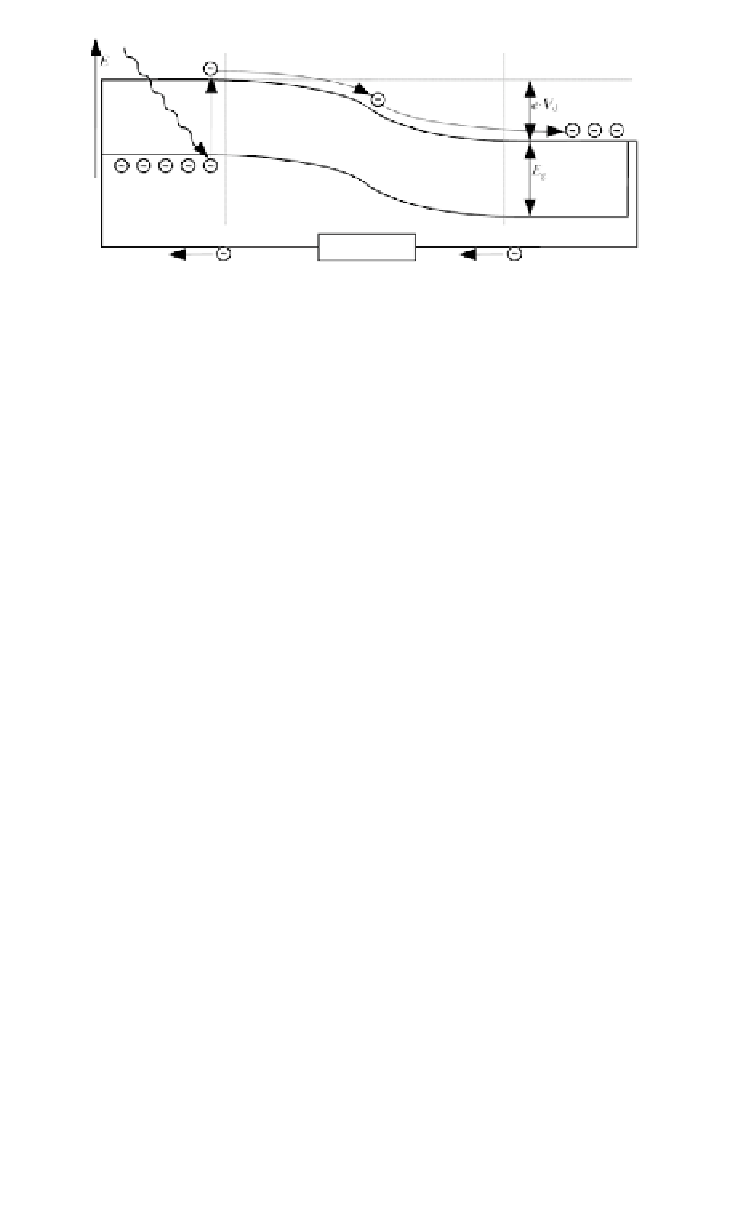Environmental Engineering Reference
In-Depth Information
Space charge region
n-region
Conduction
band
Valence
band
p-region
Load
Figure 4.8
Solar Cell Principle with Energy Band Model
(4.24)
Not all the energy of photons with wavelengths near the band gap is
converted to electricity. The solar cell surface reflects a part of the incoming
light, and some is transmitted through the solar cell. Furthermore, electrons
can recombine with holes. In other words, they can fall back to the valence
band before they are converted to electricity. Figure 4.9 describes these
processes.
The solar cell only uses an amount of energy equal to the band gap of the
higher energy of photons with lower wavelengths. Excess energy, i.e. energy
above the band gap equivalent, is passed on to the crystal in the form of heat.
Hence, the share of the usable energy mainly depends on the wavelength and
the band gap. The external quantum collecting efficiency
) is the
likelihood that an incident photon generates an electron-hole pair. It is closely
related to the spectral response, which is a measure of the part of the energy
converted into charge carriers. In photovoltaics, the
spectral response
S(
η
ext
(
λ
λ
)
given by:
(4.25)
is defined using the external quantum collecting efficiency
η
ext
and the
wavelength
λ
. Figure 4.10 shows the spectral response
S
as a function of the
wavelength
.
In the absence of an external field, i.e. if a solar cell is short-circuited, the
photocurrent I
Ph
is generated. This current can be calculated using the solar
cell area
A
, the spectral sensitivity
S
and the spectrum of sunlight
E
(
λ
λ
) (e.g. the
air mass AM 1.5 spectrum of Chapter 2):



